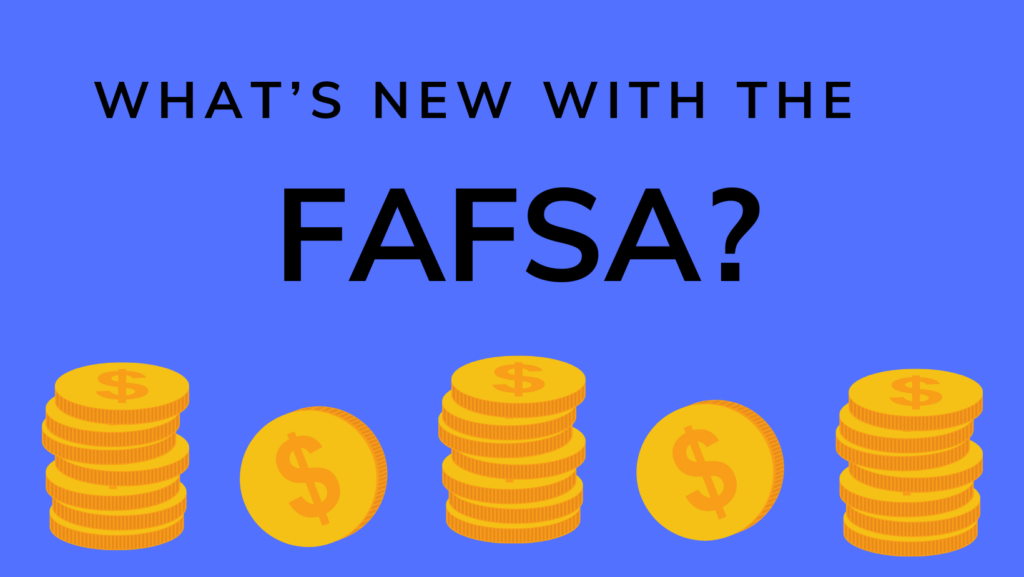What’s New With the FAFSA?

You may have heard that the United States Department of Education updated the FAFSA (Free Application for Federal Student Aid) this year with the goal of making the filing process easier and therefore giving out more student aid to more eligible students. In order for a student to be eligible for the Pell Grant, federal student loans, or other forms of federal aid, students must fill out the FAFSA, making it a vital part of the college application and planning process for many families.
While the new FAFSA form had a delayed timeline compared to other years (it launched at the end of December, rather than in October), it is now up and running and you may be asking yourself – what do I need to know about the new FAFSA? Here are some major updates that were made to the form this year.
- “Who’s My FAFSA Parent” wizard: One of the most frequently asked topics among students filling out the FAFSA has historically been how to navigate gathering and inputting parent’s income information. With the new FAFSA, students will still be able to determine their eligibility for aid and progress through the process without providing this information. The “Who’s My FAFSA Parent” wizard has been added to the form so that fewer questions are required to submit and receive access to financial aid.
- Ease of sharing tax data: The IRS has partnered with the Department of Education to directly import a student’s required tax information into the FAFSA form in real time, making the process more secure and convenient. Read more on how this partnership will eliminate time-consuming steps in filing the FAFSA here.
- New resources: The U.S. Department of Education has developed and released many new resources for students and families to successfully submit the FAFSA and make a plan to pay for college. New videos on the Federal Student Aid Youtube channel, an updated federal student aid estimator tool that only takes ten minutes to complete, and the FAFSA Knowledge Center are among the new tools families can rely on.
- Expanded Pell Grant access: In addition to a new FAFSA form, eligibility for Pell Grant funding has been updated and expanded so more students will have access to its student aid – more than 600,000 more, the Department of Education estimates. One and a half million more students will also receive the maximum Pell Grant this year. These increases are because family size and the federal poverty level will be taken into account when calculating a student’s eligibility for Pell. Click here to view a list of expanded Pell Grant access by state.
While the delays in launching the new FAFSA have created some uncertainty and added stress in the already daunting process, more students than ever will have access to federal funding this year and it’s easier to determine eligibility and estimate how much federal aid a student will qualify for. To learn more about updates to the 2024-2025 FAFSA, click here, and remember to submit the FAFSA before the June 30, 2024 deadline.